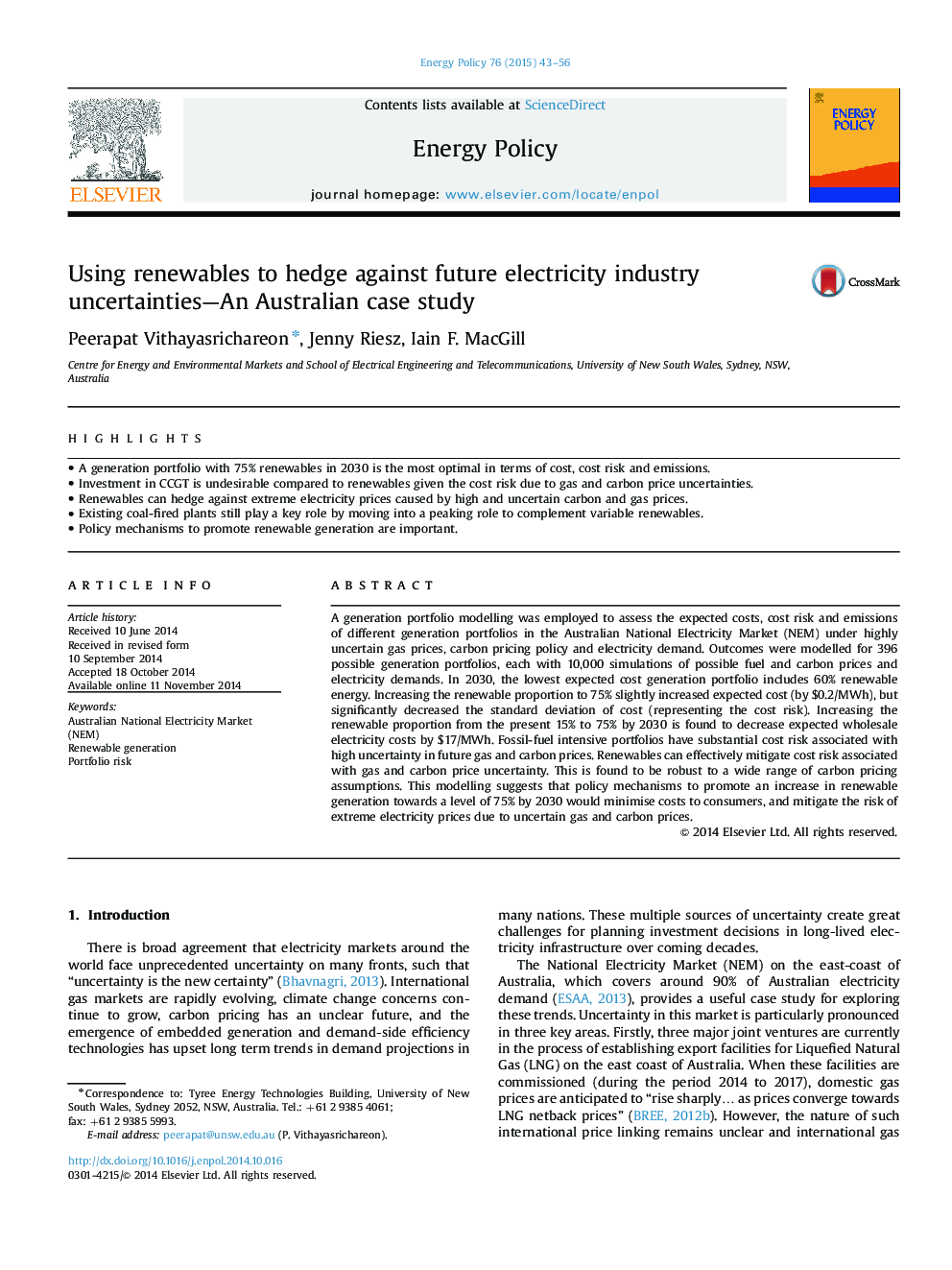| کد مقاله | کد نشریه | سال انتشار | مقاله انگلیسی | نسخه تمام متن |
|---|---|---|---|---|
| 992865 | 1481282 | 2015 | 14 صفحه PDF | دانلود رایگان |
• A generation portfolio with 75% renewables in 2030 is the most optimal in terms of cost, cost risk and emissions.
• Investment in CCGT is undesirable compared to renewables given the cost risk due to gas and carbon price uncertainties.
• Renewables can hedge against extreme electricity prices caused by high and uncertain carbon and gas prices.
• Existing coal-fired plants still play a key role by moving into a peaking role to complement variable renewables.
• Policy mechanisms to promote renewable generation are important.
A generation portfolio modelling was employed to assess the expected costs, cost risk and emissions of different generation portfolios in the Australian National Electricity Market (NEM) under highly uncertain gas prices, carbon pricing policy and electricity demand. Outcomes were modelled for 396 possible generation portfolios, each with 10,000 simulations of possible fuel and carbon prices and electricity demands. In 2030, the lowest expected cost generation portfolio includes 60% renewable energy. Increasing the renewable proportion to 75% slightly increased expected cost (by $0.2/MWh), but significantly decreased the standard deviation of cost (representing the cost risk). Increasing the renewable proportion from the present 15% to 75% by 2030 is found to decrease expected wholesale electricity costs by $17/MWh. Fossil-fuel intensive portfolios have substantial cost risk associated with high uncertainty in future gas and carbon prices. Renewables can effectively mitigate cost risk associated with gas and carbon price uncertainty. This is found to be robust to a wide range of carbon pricing assumptions. This modelling suggests that policy mechanisms to promote an increase in renewable generation towards a level of 75% by 2030 would minimise costs to consumers, and mitigate the risk of extreme electricity prices due to uncertain gas and carbon prices.
Journal: Energy Policy - Volume 76, January 2015, Pages 43–56
